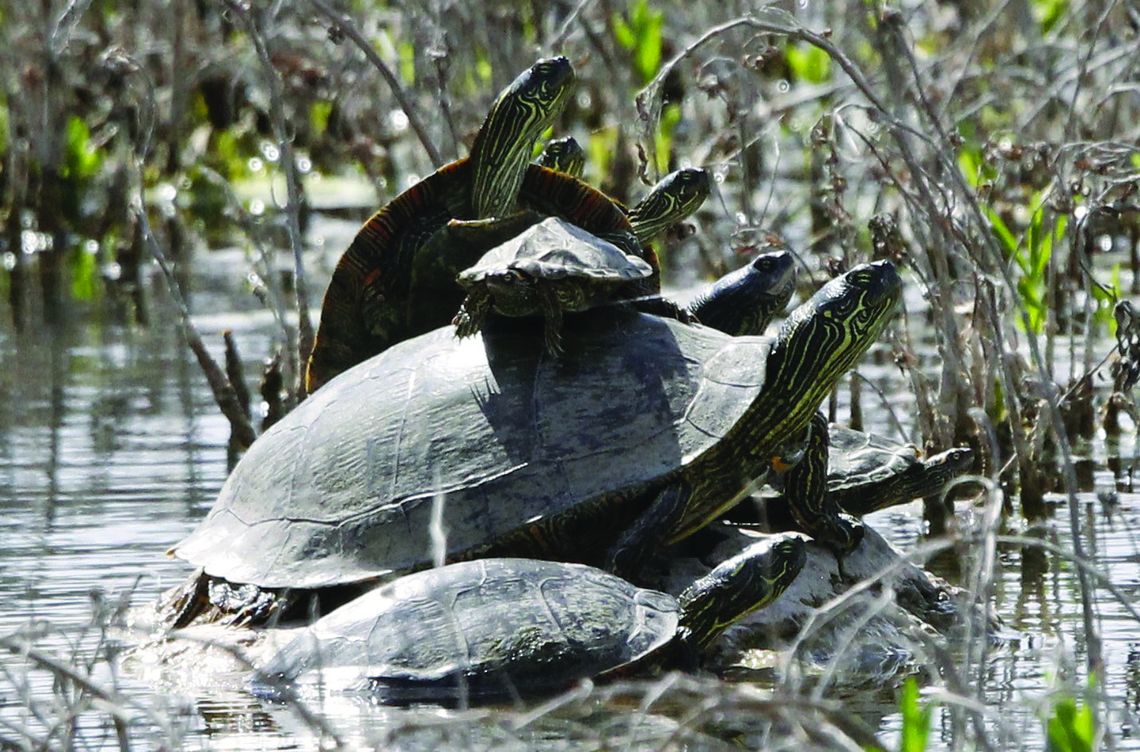As I look back over the past several years of writing this column, I have noticed that I have routinely disparaged technology. I suspect that this criticism is due to my observation that people are increasingly disconnected from the natural world around them and more dependent on their electronic devices. And due to those observations, I have felt that the natural world and technology are at odds with one another.
However, within the past several years I have become connected to a technological advancement that is connecting the natural world with technology in a positive manner. In addition, it is allowing any person who has at least some interest in the natural world to contribute to the accumulation of scientific data in a relevant way. These contributions are now known as “citizen science” contributions, and one of the best platforms for these contributions is a simple app and related webpage known simply as I-Naturalist.
I-Naturalist is a worldwide data-gathering organization that began in 2008, and since that time, over 8.5 million naturalists have made over 234.4 MILLION observations of over 514,600 species of plants and animals. But let me encourage you to not look at those vast numbers and feel as though you would have nothing to contribute – you absolutely do! And hopefully, by the end of this column, at least a few of you will take a few minutes to set this app on your phone and begin your own journey as a citizen scientist.
Everywhere you go, you are surrounded by the natural world; whether you are in the most remote regions of Texas or in the downtown offices of a metropolis there is evidence of the natural world to be observed. I-Naturalist allows you to journal those observations, regardless of your ability to identify what it is.
The premise of an observation on I-Naturalist (I-Nat for short) can simply be broken down into 5 sections – who, what, when, where and evidence. I want to take just a moment and go through these sections and in doing so, perhaps I can inspire many of you to begin to add observations to this worthwhile data- gathering project.
Who – This is where you will need to make an I-naturalist account. Go to www.inaturalist.org and click on the “sign-up” icon. Once this tab is opened, you will be able to make your own username and password. Be sure and choose a username and password that you will be able to remember easily. To make remote observations, you will need to download the I-Naturalist app.
What – As you upload an observation, you will want to add an identification to what you observed and not leave this section as “Unknown”. Even if you cannot identify the organism to the species level, you will want to make your best guess. For example, if you observe a toad in your garden, you can just make the listing as “Frogs & Toads” (there is a dropdown tab in the identify section to make your choices less complicated!) Then, experts from these fields can see your observation and add the appropriate identification. In doing so, it also allows the user to become familiar with their own observations.
When – If you are uploading an observation onto the webpage, you will need to select the date that it was observed. The app will add the date automatically as it is in real time.
Where – As you upload your observation on the webpage, you will be given a map so you can accurately pinpoint where you saw what you saw. If you are uncomfortable giving the EXACT location, there is a separate tab where you can “obscure” the locality for a certain distance. For example, if the observation was in your own backyard, you can obscure the locality to where it is still relevant to where the observation was but does not show the public EXACTLY where it was found. This tool is useful in areas that are susceptible to human interactions.
Evidence – And of course, you must be able to provide evidence of what you have observed. This is best done in the form of a photograph (don’t worry, professional style photos are NOT required!), although for some organisms such as birds, frogs, toads, or even insects a recording of a vocal call is all that is needed. What cannot be used is an observation of “I saw this animal, didn’t get a photo, but here is where it was”. These kinds of observations are never accepted by the I-Naturalist community.
In a column of this size, it is completely impossible to share all the benefits that I-Naturalist.org provides. It not only allows you to add much-needed data for reference, you can also utilize the search engine to find observations on specific organisms. Let’s say that you were planning a trip to Belize and you wanted to know what species of birds might be found there. You can find that out on I-Naturalist. Let me encourage you to visit www.inaturalist.org today; sign up if you are inclined, or just research more about what it is and how it is used on their “about” page. I guarantee that you will be hooked.
Oh, and one other thing. There are also projects within the I-Nat community itself. For example, there is a “Plants of Texas” project or a “Birds of Texas” that you can join to add to their data. And you can be involved with as many projects as you wish. One that I am especially involved in is the “Herps of Texas” project. As a curator of this project, I enjoy the ability to see folks learning about the reptiles and amphibians in this great state. So far, there have been almost 182,000 observations of 267 species from nearly 2,400 citizens in this project – I’d love to see you join in!





















